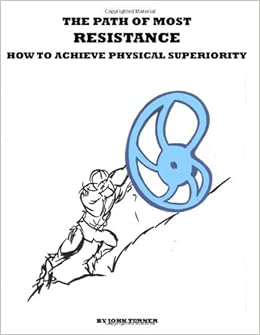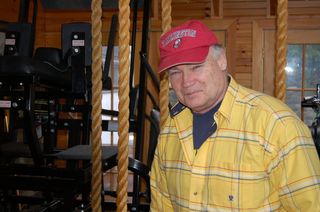I have mentioned all of the books on this list at one time or another, but decided they were so good that they deserved a single post where you can find them all. Just as my previous post about coaches I admire and appreciate, these books are presented in no particular order. Although this list is not a top ten, for aspiring strength coaches I would highly recommend the work of my friend Tom Kelso as an excellent starting off point.

NAUTILUS TRAINING PRINCIPLES No. 1-3
This Three-Volume set contains Nautilus Training Principles: Bulletins No. 1, 2 and 3. These high intensity training classics by Nautilus inventor Arthur Jones cover every aspect of training from the specifics of exercise performance to the general principles of program design.
Drew Baye combined and edited these with Arthur Jones’ permission (October 11, 2006) to improve readability and created one table of contents and index for each of the three Bulletins.
Whether you’re a bodybuilder, athlete, or just want to lose fat or improve your general health and fitness, the information you need is covered here.
e-book: FREE

A PRACTICAL APPROACH TO STRENGTH TRAINING
4th edition by Matt Brzycki
About “A Practical Approach” 4th edition
From the Inside Flap:
TABLE OF CONTENTS
Acknowledgements
1 Basic Anatomy and Muscular Function
2 The Physiological Basis of Physical Training
3 Genetics and Strength Potential
4 Strength Training
5 Strength Training for Females
6 Strength Training for Youths
7 Strength Training for Older Adults
8 Free-Weight Exercises
9 Machine Exercises
10 Manual-Resistance Exercises
11 Designing and Varying the Strength Program
12 Rehabilitative Training
13 Flexibility Training
14 Aerobic Training
15 Anaerobic Training
16 Metabolic Training
17 Power Training
18 Skill Training
19 Nutritional Training
20 Nutritional Supplements
21 Nutritional Quackery
22 Weight Management
23 A Primer on Steroids
24 Strength and Fitness Q&A
Appendix A: Summary of Free-Weight Exercises
Appendix B: Summary of Machine Exercises
Appendix C: Summary of Manual-Resistance Exercises
TAKU’s NOTE: I have several copies of Matt’s (3rd edition), and it is one of my favorites. I am a big fan of Matt’s work and have read everything of his I can get my hands on. He is a masterful writer with an excellent grasp on the intricate workings of Evidence based strength and conditioning protocols. The new fourth edition is not merely a slightly revised update, but a totally new book which is even more comprehensive then the last edition. Matt, you did what you set out to do. Well done. Thanks!

MAXIMIZE YOUR TRAINING
is a collective effort of more than thirty leading experts in the strength and fitness field. These respected professionals share their insights on a variety of topics and issues related to training and exercise, including:
- The history of strength training
- Program design
- High intensity training (HIT)
- Motivation
- Strength training for specific populations (including women, older adults, and prepubescents)
- Bodybuilding
- Powerlifting
- Flexibility
- Nutrition
- Steroids
Maximize Your Training is for fitness enthusiasts who want to gain the knowledge, understanding, and insight necessary to achieve a competitive edge. This book is an important tool for anyone who takes bodybuilding, sports performance, and athletic training seriously.
TAKU’s NOTE: As mentioned above, I own several books by Matt Brzycki, and they are excellent. Maximize your training should be on every Strength and Conditioning coach’s top-10 book list. It is loaded with valuable information on evidence based exercise programs, and will assist those interested in how to design, implement, and update comprehensive strength programs for any goal. Although this book has been around for some time, I highly recommend that you get yourself a copy today.

THE PATH OF MOST RESISTANCE
“The Path Of Most Resistance” by John Turner. Although this book is only 126 pages, like many great books it makes up in valuable information what it lacks in length. As the sub-heading says, this book is loaded with everything one might need to achieve physical superiority. There is nothing which is of no use. Mr Turner shares his unique perspectives garnered from years of personal exploration. Those who take the time to read, absorb, and most importantly apply the lessons contained within its pages, will be rewarded (perhaps for the first time) with real results for their efforts.
In The Path of Most Resistance, Turner has the answers you’ve been looking for – – blunt, hard-hitting, honest advice including:
Full-Range Exercise
The Human Powertrain
Winning The Exercise Lottery
How To Achieve Physical Superiority
TAKU’s NOTE: I highly recommend that anyone with an interest in exercise history, Arthur Jones, Nautilus equipment, and real training information, pick up a copy of this book A.S.A.P. Read, pay attention, apply what you learn, and most importantly work hard. The results will most likely surprise you.

UE-1 (Ultimate Exercise Bulletin #1)
UE-1 is Dr. Doug McGuff’s first published work on high intensity strength training. Read the groundbreaking book that introduced the concepts of the dose-response relationship of exercise, time under load, stoicism in training and other insights that forever changed the field of exercise.
ORDER YOURS TODAY!

BODY BY SCIENCE
Body By Science, written by Doug Mc Guff and John Little, is one of best books I have encountered for explaining the theory and reasoning behind Brief, Intense, and Infrequent training. This book is well written, informative, and goes into detail about the science behind the author’s recommendations, as well as detailing exactly what to do and how to do it.
To order your copy of Body By Science please click here: Body by Science
By using a proper science-based approach to exercise you can be on your way to achieving the following in as little as 12 minutes a week:
- Build muscle size and strength
- Optimize cardiovascular health
- Ramp up your metabolism
- Lower cholesterol
- Increase insulin sensitivity
- Improve flexibility
- Manage arthritis and chronic back pain
- Build bone density
- Reduce your risk for diabetes, cancer, heart attack, and more.
TAKU’s NOTE: Over the last year or two I have personally experimented with this style of training with myself, and my clients. I find it to be both extremely efficient, and highly effective. Many of my clients are experiencing excellent results in both strength and fitness, while participating in only one or two very brief workouts per week. For more information about this type of training visit the BODY BY SCIENCE home page.
Three of the best books I have come across all come from the same guy. His name is Tom Kelso and he is at the top of a very short list of coaches and trainers who I have found to be the best in the business.
The three books are:

- THE INTERVAL TRAINING MANUAL*
The Interval Training Manual is a book I wish I had when I was just getting started. it is loaded and contains:
*132 different interval running workouts
*4 levels of difficulty each
*14 different running venues
*All target and recovery times included
*Design your own intervals using enclosed percent speed and recovery time charts.

THE STRENGTH TRAINING WORKOUT ENCYCLOPEDIA
The Strength Training Workout Encyclopedia was inspired by the question every good coach hears thousands of times during his/her career “Can you design a workout for me?” Tom went above and beyond and created a tool for both athletes and coaches alike. There are literally thousands of workouts in almost every style you could ever need or want.

Finally there is Tom’s e-book “TRUTH MYTH & REALITY: What Can and Cannot be Done in a Strength & Conditioning Program”. This book is based on Tom’s own research and 30+ years of “down in the trenches” experience. If you are someone who not only welcomes the truth but DEMANDS it, then this e-book is definitely for you.
TAKU’s NOTE: After twenty-five plus years of working actively in the fitness industry I have gained some insight into what works and what doesn’t. If you are a strength coach or an athlete, do yourself a favor and pick up a copy of these three books. You can find links to all of them by visiting: http://www.tomkelso.com/
Well, there you have it. As far as I am concerned after literally reading hundreds and hundreds of books, and articles over the years these books should be on the shelf of every strength coach.
PAU for NOW
TAKU
Filed under: Coach's Corner, Products, Training | Tagged: Athletics, conditioning, Evidence Based Exercise, H.I.T., High Intensnity Training, Strength Training | Leave a comment »





















































